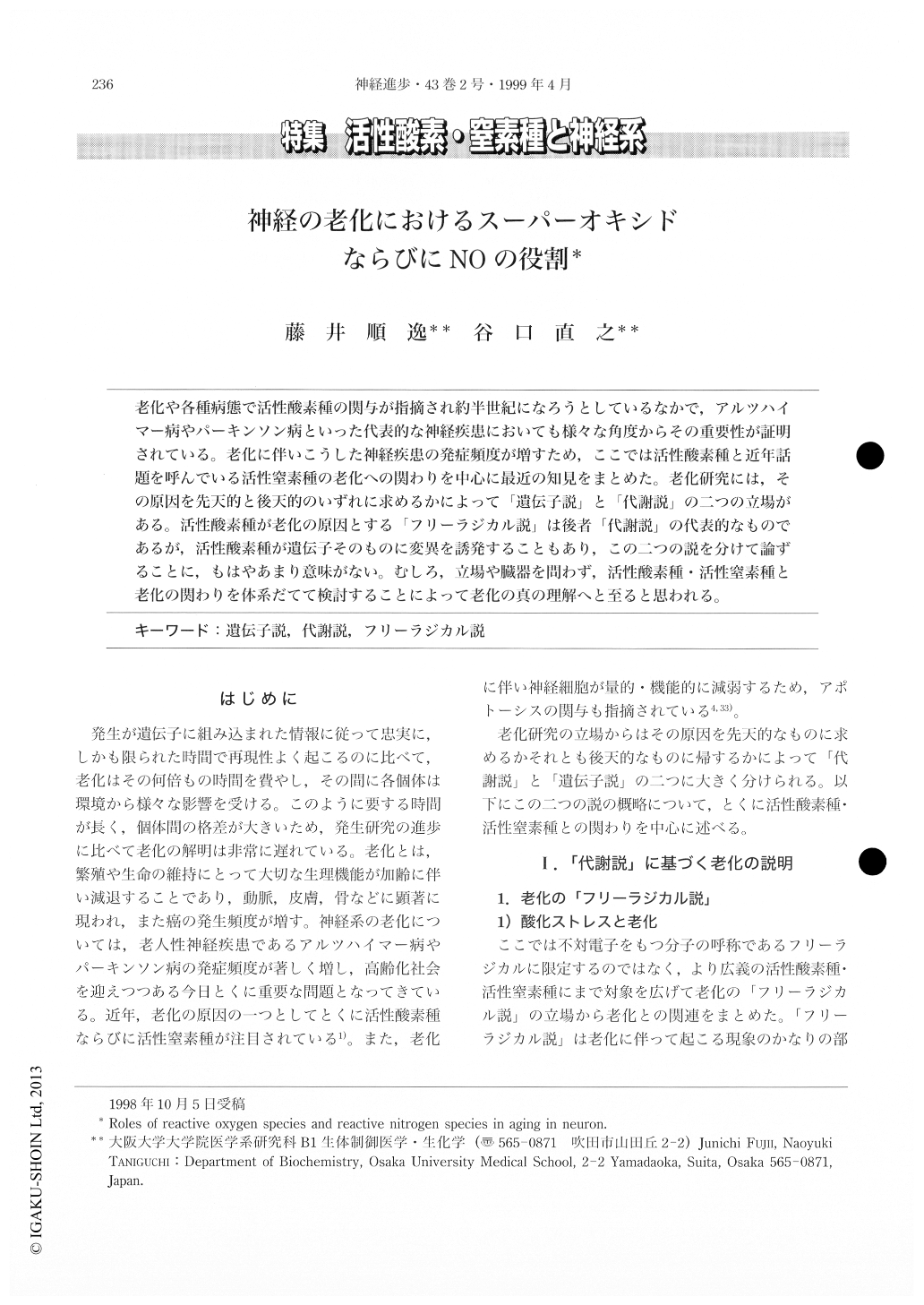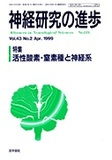Japanese
English
- 有料閲覧
- Abstract 文献概要
- 1ページ目 Look Inside
老化や各種病態で活性酸素種の関与が指摘され約半世紀になろうとしているなかで,アルツハイマー病やパーキンソン病といった代表的な神経疾患においても様々な角度からその重要性が証明されている。老化に伴いこうした神経疾患の発症頻度が増すため,ここでは活性酸素種と近年話題を呼んでいる活性窒素種の老化への関わりを中心に最近の知見をまとめた。老化研究には,その原因を先天的と後天的のいずれに求めるかによって「遺伝子説」と「代謝説」の二つの立場がある。活性酸素種が老化の原因とする「フリーラジカル説」は後者「代謝説」の代表的なものであるが,活性酸素種が遺伝子そのものに変異を誘発することもあり,この二つの説を分けて論ずることに,もはやあまり意味がない。むしろ,立場や臓器を問わず,活性酸素種・活性窒素種と老化の関わりを体系だてて検討することによって老化の真の理解へと至ると思われる。
It is about a half century since involvement of reactive oxygen species (ROS) in various diseases including Alzheimer's disease and Parkinson's disease was implicated. Since incidence of these diseases increases during aging process, here we overview significance of ROS and reactive nitrogen species (RNS) in aging. Theories on causes of aging are classified into two major groups ; the genetic theory and the metabolic theory. The former hypothesizes gene (s) which programs aging process, while the latter implies accumulated metabolites as a causes of aging. Although free radical theory of aging is one of the major metabolic theories, ROS and RNS are mutagenic and affect various genes. Thus now it is not so important to discuss the two theories independently. We should rather examine the relationship between ROS/RNS and aging phenomena in our body, then may approach understanding of aging.

Copyright © 1999, Igaku-Shoin Ltd. All rights reserved.


